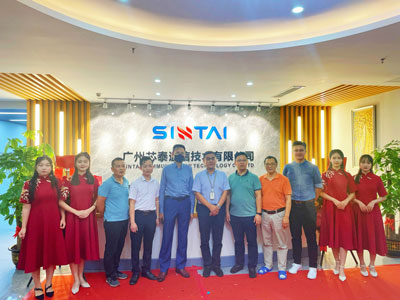The unlimited demand for increased communication bandwidth is driving the development of new network structures and related cloud computing architectures. These emerging networks will allow more flexible allocation of cloud computing resources, but the premise is that the coverage and scope of high-speed communications backbone networks using fibre optical transmission continue to expand. There are two new options for the emerging wireless network structure, including distributed heterogeneous architecture and centralized homogeneous architecture. Both will provide new opportunities for cloud computing architecture.
The centralized method takes advantage of the high-speed optical interconnection between the remote radio head and the centralized server. Centralized base band processing is transferred from remote radio heads, which can be positioned tens of kilometers away by using optical links that support standard communication protocols. Base band processing can be completed on standard server hardware, thereby reducing the development and deployment costs of base band functions. Standard server hardware also makes it easier to deploy software updates and expand capacity. The use of standard servers allows operators to move some cloud computing-related processing and storage functions closer to consumers, thereby providing new functions and sources of income.
Centralized servers will need to be connected to the network backbone to meet communication requirements from multiple coverage areas, and need to be connected to other server clusters. High-speed communication between clusters will help balance processing and storage requirements, depending on the number of users in each region. The server-to-server connection will achieve load balancing, thereby effectively utilizing the deployed computing and storage resources.
The small cell method uses several different types of cells to provide different coverage. The macro cell has the largest coverage of more than 30 kilometers, while the smaller micro and pico cells cover from 2 kilometers to 200 meters. Each of these units has a natural coverage area, from a few city blocks or a large complex to a building. The smallest femtocell may cover a single small business. These heterogeneous cells combine radio front-end and base band back-end functions, and occupy a small space. In fact, the floor space requirement is small, so it can be easily deployed on the roof or in the existing service cabinet of the building. The centralized network architecture of basic fibre optical communication systems eliminates the need to install large and expensive towers and makes it easier to deploy more capacity.
Most likely, emerging network architectures will mix centralized and small cell structures. Centralized servers will be connected to remote radio heads in areas where coverage is established and unhindered, while small cells will be deployed in shaded areas within coverage and areas that need to expand coverage but still do not require centralized facilities. When small cells are deployed in campuses, office buildings or other high-traffic areas, they may also have associated cloud server functions. These local cloud servers can be used as an extension of remote cloud services and reduce traffic during busy periods.
As bandwidth demands increase, fibre optical communications will become popular in these new architectures. In a centralized system with remote radio heads, at the outermost edge of the communication grid, fibre optical communications can be used to meet the requirements for mid-range connectivity.


